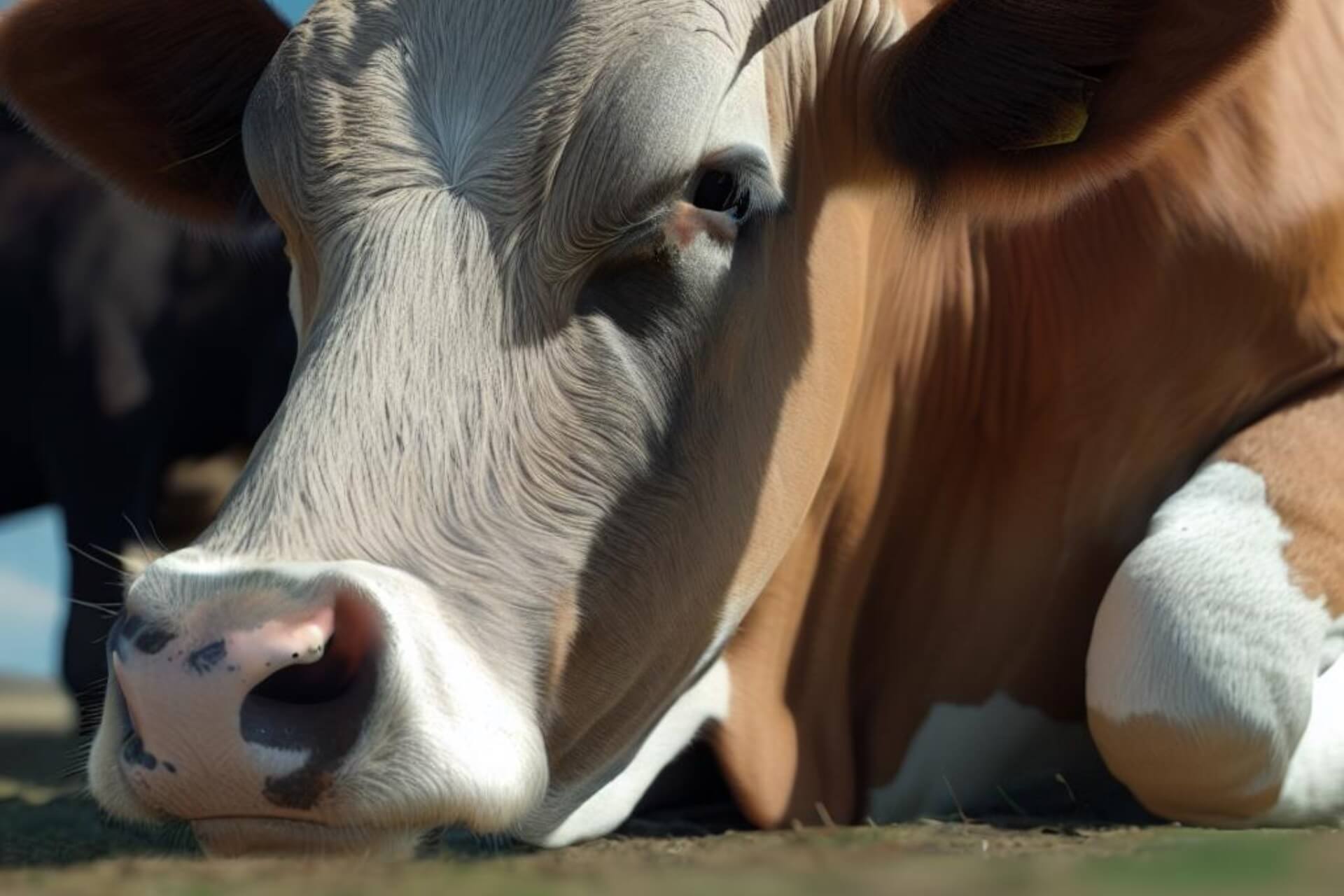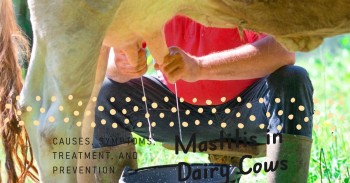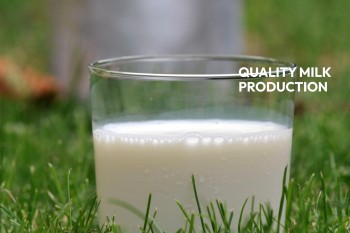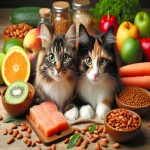Hypocalcemia in Dairy Cattle: Unveiling the
Challenges of Calcium Imbalance 🐄🥛💡
Pathophysiology 📚🩺
Hypocalcemia, a condition
characterized by low blood calcium levels, poses a significant threat to adult
cows, as their normal calcium concentration ranges between 8.5 and 10 mg/dl.
Meeting the calcium requirements during colostrum production, fetal maturation,
and early lactation demands substantial mobilization of calcium from bone and
an enhanced efficiency of gastrointestinal tract absorption. Intestinal
absorption of calcium heavily relies on the production of 1,25-dihydroxyvitamin
D3, triggered by parathormone (PTH) secretion in the kidneys. While increased
renal absorption of calcium contributes minimally to calcium availability in
transitioning adult cows, the action of PTH plays a crucial role in maintaining
calcium homeostasis. When plasma calcium levels decrease, PTH secretion is
activated, resulting in osteoclastic bone resorption, increased intestinal
absorption facilitated by 1,25-dihydroxyvitamin D3, and enhanced renal tubular
resorption of calcium. However, several factors can impede the efficient
response to lactational demands, despite appropriate PTH secretion. Acid-base
status, particularly metabolic alkalosis, has emerged as a significant factor
in milk fever and subclinical hypocalcemia. Alkalinization interferes with
skeletal calcium resorption and intestinal absorption by altering the
PTH-receptor interaction at the tissue level. As a consequence, downstream
signaling events that should lead to increased plasma calcium fail to occur
despite PTH secretion. The paradigm of dietary acidification, supported by the
use of anionic salt supplementation in dry cow diets, has proven effective in
reducing the incidence of milk fever and subclinical hypocalcemia by inducing
relative acidification in late gestation. Additionally, age, breed, and
endocrinologic factors, such as estrogen levels, can contribute to the
development of hypocalcemia in dairy cattle. 🧪💊🔬
Clinical Signs 🚨👀🩺
Parturient hypocalcemia, commonly
known as milk fever, typically manifests within 24 hours before to 72 hours
after calving. The initial signs are restlessness, excitability, and anorexia.
A notable behavior observed in affected cows is the protrusion of the tongue
when stimulated around the head, a displacement activity usually seen when cows
experience conflicting emotions of aggression and fear. The cow's ability to
regulate core temperature becomes gradually compromised, resulting in high or
low rectal temperatures depending on the ambient temperature. Cutaneous
circulation is depressed, leading to cool extremities in colder conditions.
Rumen contractions weaken and may eventually cease. Skeletal muscle weakness
progressively develops, causing cows to stagger, fall, or become recumbent.
During the hypocalcemic state, heart rate increases, but cardiac output
decreases due to reduced venous return and weakened cardiac muscle. Bloat
occurs as a consequence of failed eructation. Without timely intervention,
death may occur within 12 hours of the onset of signs, often caused by
suffocation due to bloat or cardiovascular collapse. Traditionally,
hypocalcemia has been classified into three stages, with stage 1 characterized
by the cow's ability to stand, stage 2 by recumbency, and stage 3 by coma and
unresponsiveness.
Treatment 💉💪🩺
The most widely used treatment
for hypocalcemia is the parenteral administration of calcium borogluconate. The
selection of calcium concentration, calcium salt formulations, and additional
components within the infusion solution can vary based on personal preference
and individual cow requirements. Calcium borogluconate solutions administered intravenously
or subcutaneously result in rapid recovery of skeletal muscle tone and
restoration of smooth muscle function in the gastrointestinal tract. During the
administration of intravenous calcium, cows often eructate, defecate, or
urinate, and many uncomplicated cases of stage 2 hypocalcemia regain the
ability to stand before or shortly after the infusion is completed. In cases
where cows are recumbent on slippery surfaces, it is crucial to carefully move
or slide them to prevent exertional myopathy and other musculoskeletal
injuries. The normal serum calcium concentration in cows typically ranges
between 8.5 and 10 mg/dl. At a calcium level of 7 mg/dl, cows can usually stand
but may experience moderate bloat and anorexia. Most cows become recumbent at a
calcium level of 5 mg/dl, while levels below 4 mg/dl often result in a comatose
state. A standard 500-ml bottle of 23% calcium borogluconate contains 10 g of
calcium. For a mature Holstein cow weighing 700 kg and in good condition, with
approximately 210 liters of extracellular fluid, a calcium deficit of 10.5 g
would necessitate the administration of one standard bottle of calcium to raise
serum calcium to 10 mg/dl. Additional calcium supplementation may be considered
to compensate for anticipated ongoing losses. It is noteworthy that the heart
rate typically decreases to some extent during the infusion of intravenous
calcium solutions to hypocalcemic cows. If an abrupt increase in heart rate or
arrhythmia occurs during the infusion, it may be necessary to slow or
discontinue the infusion. 📈💊🏋️♀️
For successful intravenous
administration, calcium solutions should be warmed to body temperature before
use. Solely subcutaneous treatment is inadequate for recumbent cows due to
impaired circulation and slow absorption. The availability and utilization of
oral gels and liquids have increased among producers for the treatment and
prevention of hypocalcemia. Among the simple calcium salts, only calcium
chloride has demonstrated adequate bioavailability for the therapy of clinical
milk fever. However, caution must be exercised when using liquid forms of
calcium chloride as a drench, as they can be highly caustic and have caused
aspiration pneumonia and death in cows. The use of oral calcium supplements
requires functional swallowing reflexes to prevent the entry of caustic
materials into the trachea. Therefore, the severity of hypocalcemia and muscle
weakness should be assessed in each individual before considering oral calcium
supplementation. Calcium propionate, incorporated into drench mixtures, has
gained popularity for early lactation cows that are off feed. Administering 1.5
pounds of calcium propionate orally provides approximately 140 g of calcium,
while 1 pound provides around 90 g of calcium. Calcium propionate offers the
added advantage of serving as an energy source (propionate source) without the
caustic properties associated with other calcium salts. Evidence-based research
has shown favorable relapse rates and clinical response to oral calcium
administration compared to conventional intravenous therapy. However, the
decision to administer intravenous calcium therapy for recumbent milk fever
cases remains at the discretion of the clinician and may vary depending on farm
practices. Nevertheless, on many dairy farms, the administration of calcium to
anorectic cows with mild hypocalcemia has transitioned entirely to the oral
route.
In the majority of uncomplicated
milk fever cases, a single treatment is usually sufficient. In the event of a
relapse, consideration should be given to supplementing magnesium in addition
to calcium. Magnesium hydroxide rumen laxative boluses or magnesium oxide can
be administered orally for a few days after parturition to provide supplemental
magnesium. However, excessive use should be avoided to prevent systemic
alkalosis and decrease in ionized calcium levels.
Practitioners may differ in their
recommendations regarding complete milk removal from mature cows at risk of
milk fever. While partial milk removal may help reduce the development of
hypocalcemia, it should be noted that cows not fully milked out may experience
milk leakage and an increased susceptibility to environmental mastitis.
Hypocalcemia demands timely
attention and appropriate treatment to prevent severe complications and improve
the welfare of cows during the critical transition period. Early detection,
proper management, and veterinary intervention are paramount in effectively
addressing this silent adversary of calcium balance in dairy cattle.
Prevention and Control 🛡️🔒🩺
Preventing hypocalcemia is
crucial for maintaining herd health and productivity. Several preventive
measures can be implemented. Proper nutrition management during the dry period
and transition period is essential to optimize calcium and other mineral
levels. Ensuring a balanced diet with appropriate calcium-to-phosphorus ratios,
along with adequate magnesium intake, can reduce the risk of hypocalcemia.
Supplementation with anionic salts in the late dry period helps maintain a
slightly acidic urine pH, promoting calcium mobilization and absorption.
Furthermore, maintaining good cow comfort, minimizing stress, and providing a
well-managed environment contribute to overall cow health and reduce the
incidence of hypocalcemia. Regular monitoring of blood calcium levels and
working closely with a veterinarian help identify high-risk cows and adjust
management practices accordingly. By focusing on prevention and control
strategies, dairy farmers can minimize the impact of hypocalcemia on cow health
and productivity. 🥛🔍🔒


















